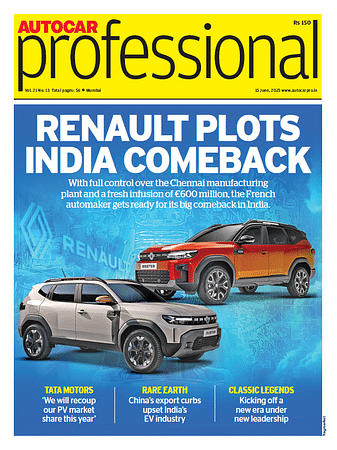Freudenberg-NOK’s Innovation Management System helps forecast and develop future technologies
With rapidly changing technology and advanced vehicle designs driving the automotive industry, suppliers must be strategic in their product planning.
With rapidly changing technology and advanced vehicle designs driving the automotive industry, suppliers must be strategic in their product planning.
Now, Freudenberg-NOK Sealing Technologies (Freudenberg-NOK) has upped its abilities to identify and pursue crucial innovations through the use of an advanced Innovation Management System (IMS) that aligns its product strategies, analyzes portfolio opportunities and selects the most promising future technologies it should fund.
The system, implemented in 2012, uses a structure that allows the company to more actively participate in market segment analysis of trends, customer needs and product developments to rank the importance of future innovations. The opportunity analysis and selection process aligns with the company’s strategic product plans and ensures strong linkages between corporate, lead and competency centre teams.
“IMS allows us to bring new products and technologies to market faster to deliver profitable growth,” said Dr. Luis Lorenzo, senior vice president, Technology and Innovation. “Our ability to forecast and develop future technologies in advance of our customers’ requirements is critical to our long-term sustainability and competitiveness.”
IMS standardises five processes involved in technology development: Strategy Alignment, Opportunity Definition, Opportunity Analysis and Selection, Opportunity Prioritization, and Innovation Development. IMS is founded on well-defined activities and practices taking place during each of these processes. Activities are structured to increase the speed at which Freudenberg-NOK can bring new technologies to market.
“We work with our manufacturing plants and sales and marketing managers to rank opportunities and come to an agreement on which products and technologies we will ultimately pursue,” said Jens Trabert, director, Future Technology, Freudenberg Sealing Technologies. “At the same time, we factor in partnerships and external support that may be available to us. We evaluate all of these factors before we make a final decision about which future technologies we will develop. It’s the only way to ensure that we will achieve success for our company and our customers.”
At any given time, Freudenberg-NOK says it is in the process of analyzing more than 500 key technologies it has the ability to develop. The process has already proven instrumental in targeting component innovations and processes that have resolved customer challenges.
Award-winning thrust washer
One such success is the company’s most recent and award-winning innovation, a thermoplastic thrust washer, which offers customers an alternative to traditional roller bearing or simple spacer assemblies. Grooves on the surface of the newly developed thrust washer help better handle oil flow. The company used the various phases of IMS to address customer requirements and create a solution.
“We used IMS as a map to guide us through the development of the thrust washer,” said Sai Sundararaman, scientist specialist. “We looked at customer requirements like temperature, speed of the shaft and load capacity, and also considered light-weighting and fuel economy trends to develop an optimal design using the right materials.”
After concept shaping was completed, an analysis and initial wear testing was done on the material. To perform physical tests, a one of a kind piece of test equipment was built that emulated customer requirements, specifically for 10,000 rpm with 3,000 pounds of force.
The final phase of the product was to manufacture it using single cavity net shape injection molding to reduce engineering waste. First generation versions of the thermoplastic thrust washer have been launched, which offer reduction in noise and spin loss. In addition, the thrust washer reduces friction loss, something that is typically considered a disadvantage with plastic thrust washers.
Currently in the prototyping phase, the second generation thrust washer will come with further enhancements in tribological features and friction reduction.
RELATED ARTICLES
Volvo Cars signs recycled steel supply pact with SSAB
The recycled steel will be used in selected components of the forthcoming, fully electric EX60 SUV, as well as other car...
Schaeffler and NVIDIA ink technology collaboration to advance digital manufacturing
Using NVIDIA Omniverse, Schaeffler is expanding its production elements, which will be integrated and simulated as digit...
BMW Group to industrialise Virtual Factory, slash production planning costs
What once required several weeks of real-world modifications and testing can now be precisely simulated in the BMW Group...





 By Autocar Professional Bureau
By Autocar Professional Bureau
 21 Jan 2015
21 Jan 2015
 3583 Views
3583 Views









